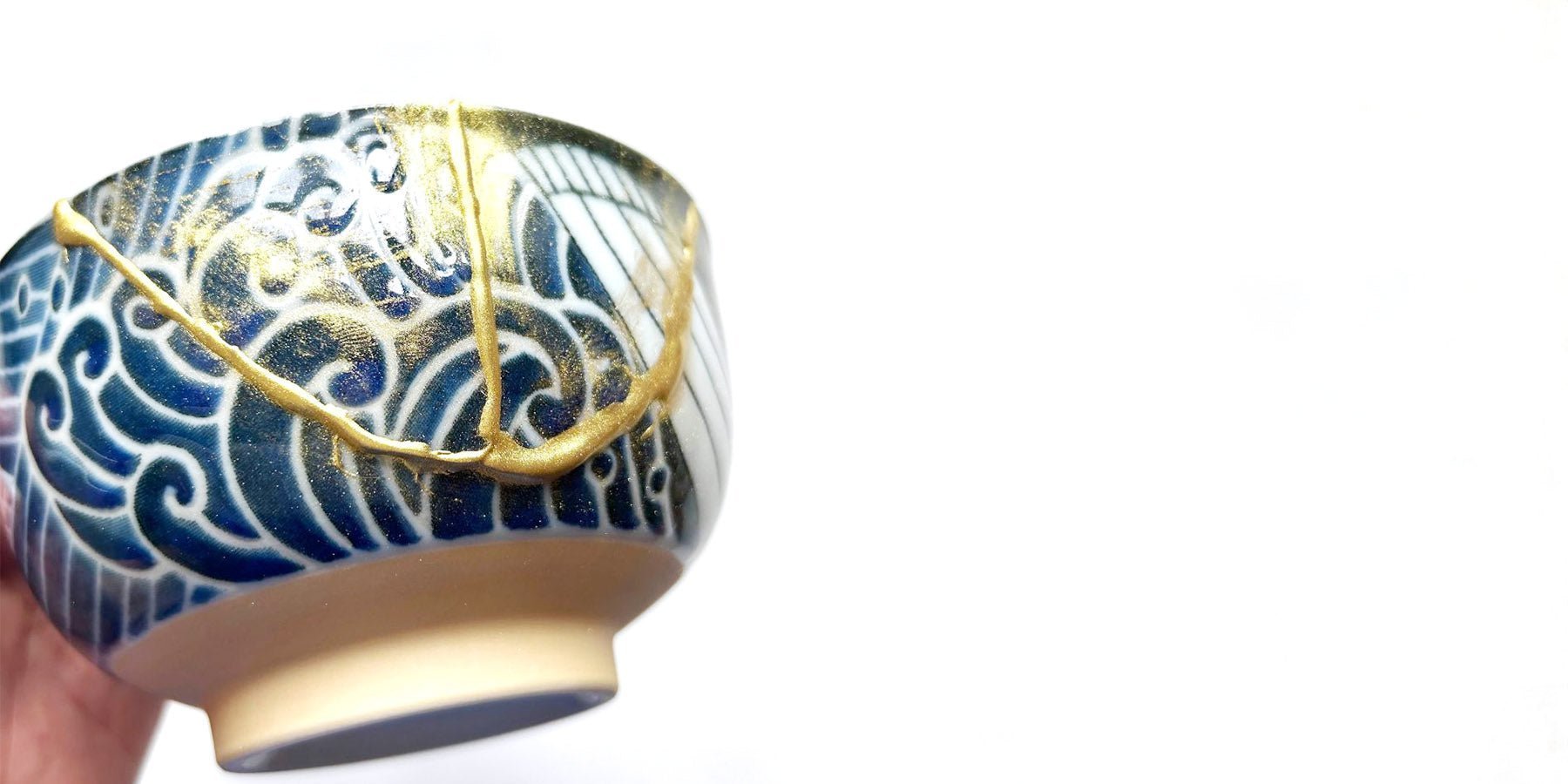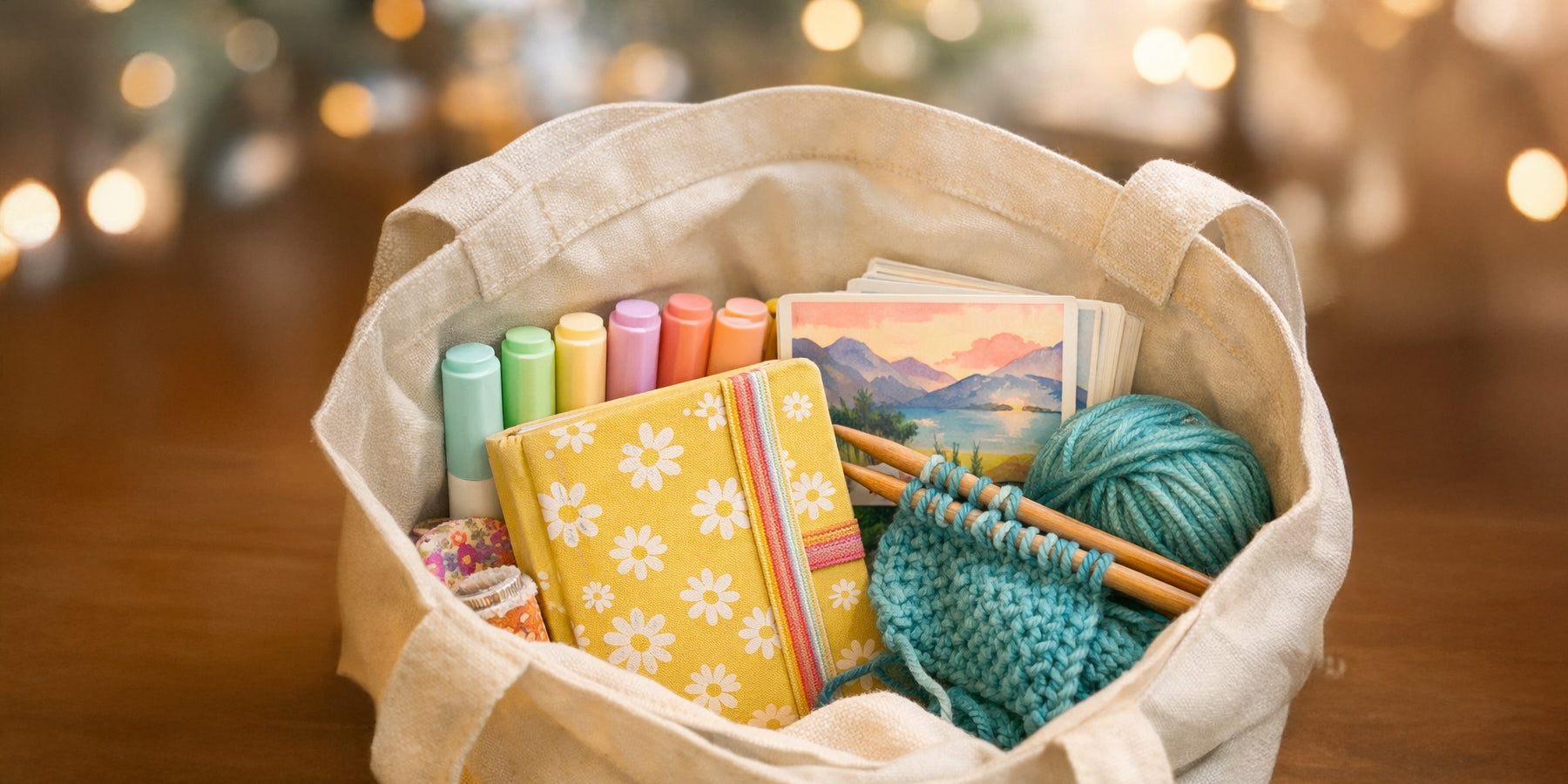Is your favorite tableware shattered? Don't worry, because with the Japanese art of Kintsugi, you can repair it, make it even more beautiful, and find a sense of zen. How? I'll explain it in this blog post, so you can get started with this repair technique yourself.
What is Kintsugi?
The Kin of Kintsugi (金継ぎ) means gold, and Tsugi means mending. This Japanese technique involves repairing broken tableware by gluing the shards together with urushi, a tree resin also used in Japanese lacquerware. The gold touch was added centuries later.
The history of Kintsugi dates back to the 15th century when the Japanese shogun Ashikaga Yoshimasa sent a damaged Chinese tea bowl to China for repair. It returned with simple metal staples to hold it together. Not quite to the shogun's taste, who commissioned craftsmen to create something more beautiful. And so it was.

Wabi-Sabi meets Kintsugi
The idea behind Kintsugi that broken objects are not less valuable, but rather become more beautiful when repaired and the cracks are made visible, is closely linked to the Japanese philosophy of Wabi Sabi. This comes from Zen Buddhism and emphasizes impermanence, emptiness, and acceptance of the imperfect and changing nature of life.

Getting started with Kintsugi yourself
All great reasons not to throw away your broken dishes, but to refurbish them with this restoration technique. You can approach this in various ways; like a professional with traditional materials , there's even a kit with real gold , or an easy peasy solution with epoxy .
Follow these steps to create your own Kintsugi project:
Step 1: Preparing the fractions
Make sure the broken pieces of your ceramic are clean and dry. If there are any sharp edges, you can gently sand them smooth with fine sandpaper. Consider how the pieces will fit together before you start gluing.
Step 2: Mixing the glue and gold
Mix the epoxy resin or glue with the gold powder or metallic pigment, working in small batches, not too much at once. Ensure the substance is thoroughly mixed and has a glossy gold color. It's important not to wait too long at this point, as the glue will harden.

Step 3: Applying the glue
Carefully apply the gold glue to the cracked edges of your ceramic. Use a fine brush to apply the glue neatly and evenly. Work slowly and precisely so the cracks are clearly visible and the glue doesn't spread too much.
Step 4: Putting the pieces together
Gently press the pieces together, ensuring they stay firmly in place while the glue dries. Wait about 10 minutes before putting the object down or putting it away. It will then take a day or two for the glue to fully cure. For larger objects, it can be helpful to use rubber bands or tape to hold the pieces in place while the glue dries.
Step 5: Finishing touch
Once the glue has fully cured, you can carefully sand away any excess glue. Make sure the gold lines are neat and smooth.

You see, Kintsugi is really more than just a technique for repairing broken objects; it teaches you To see beauty in imperfection and also to be patient and mindful. Whether you're looking for a creative project or a deeper personal meaning, Kintsugi lets you look at fractures differently—both in objects and within yourself. So grab that broken dishware, get to work with gold, and discover the magic of Kintsugi!

The author: Ingrid Beyer
Ingrid from Happlify crew member Roppongi is a far-too-humble Japan expert who can tell you all the ins and outs. Roppongi is the online store for lovers of Japan, design, good food, tea, and DIY. Visit Roppongi and the blog regularly for the quickest trip to Japan. Ingrid's blog posts >












Interesting? Share with someone:
Find the perfect furniture that makes your home truly feel like you
Enjoy fall with Pumpkin Spice Buns from Just Gimmie Fries